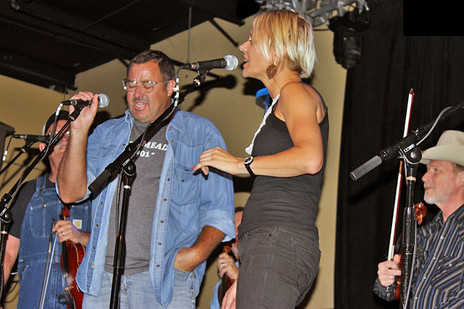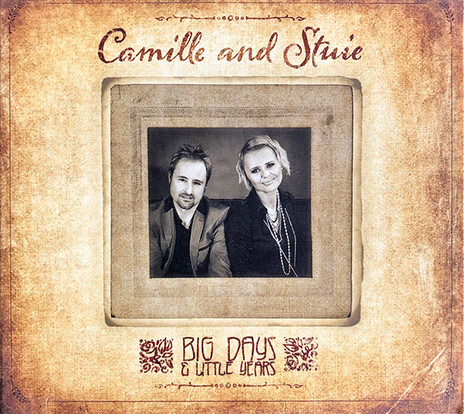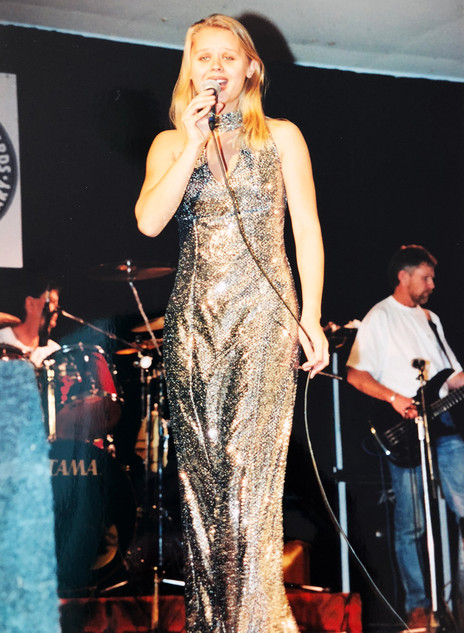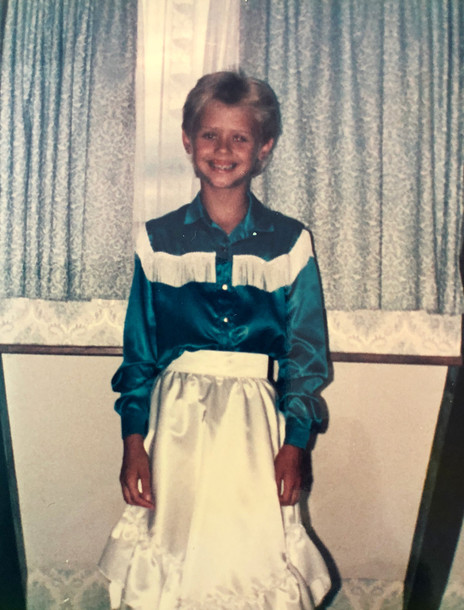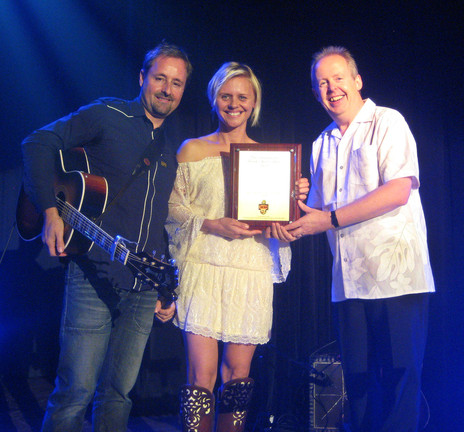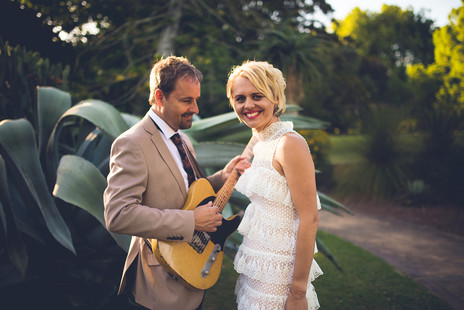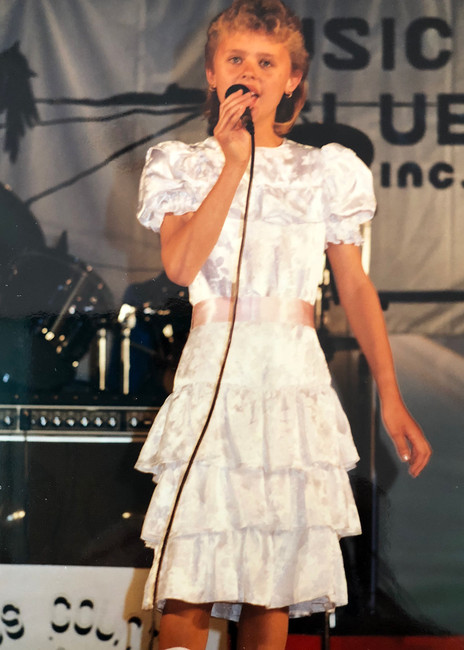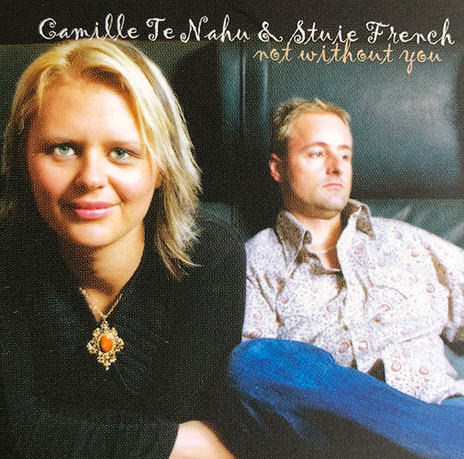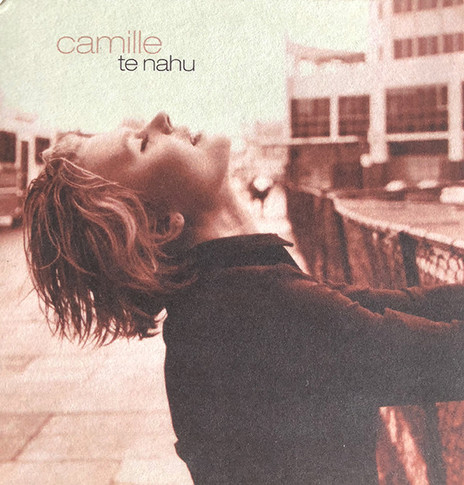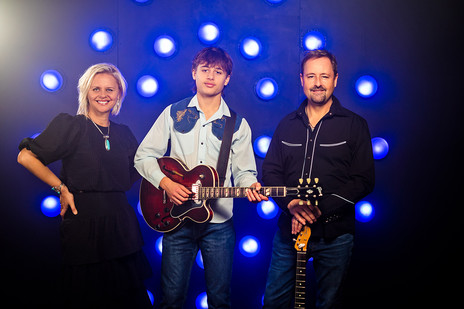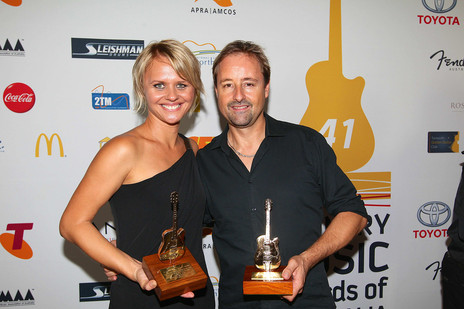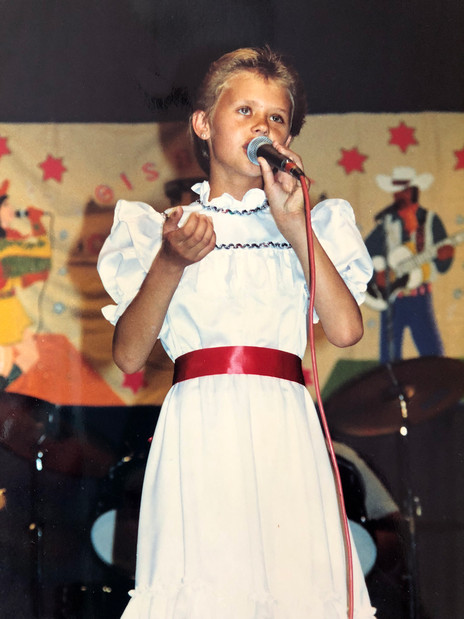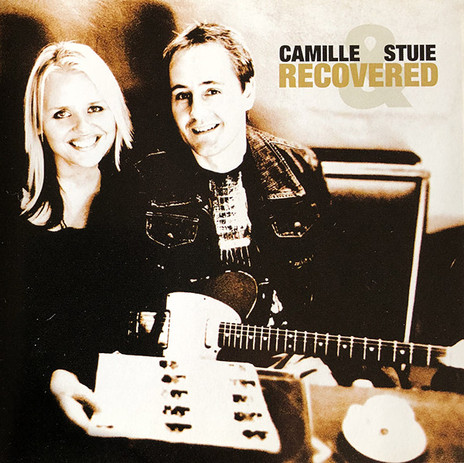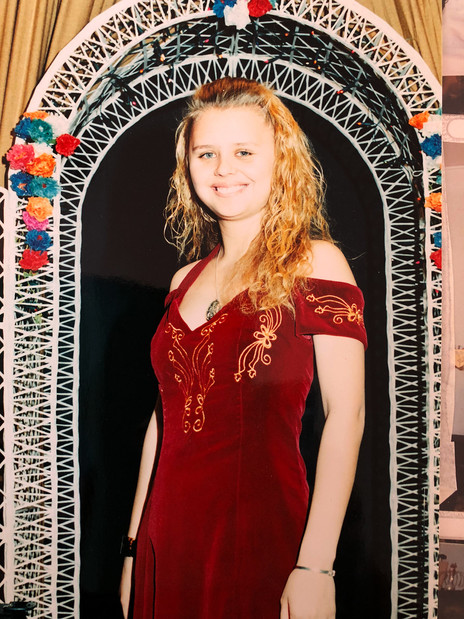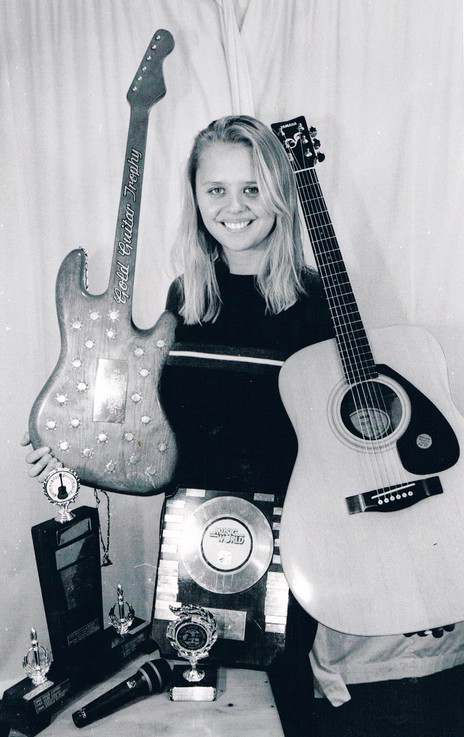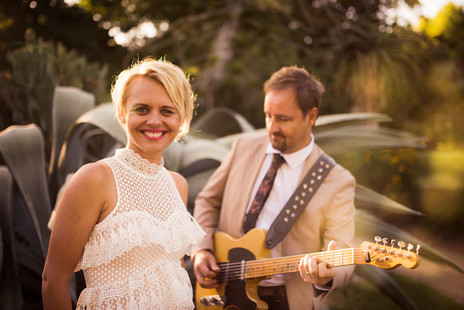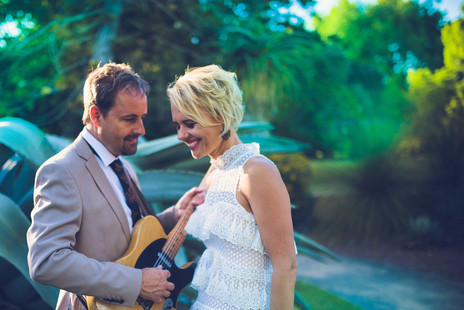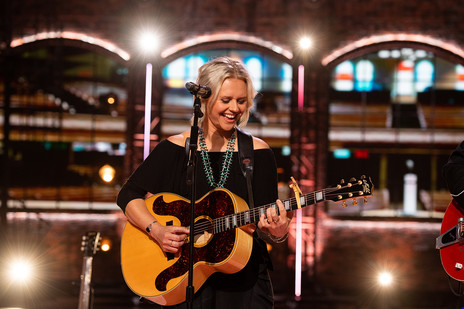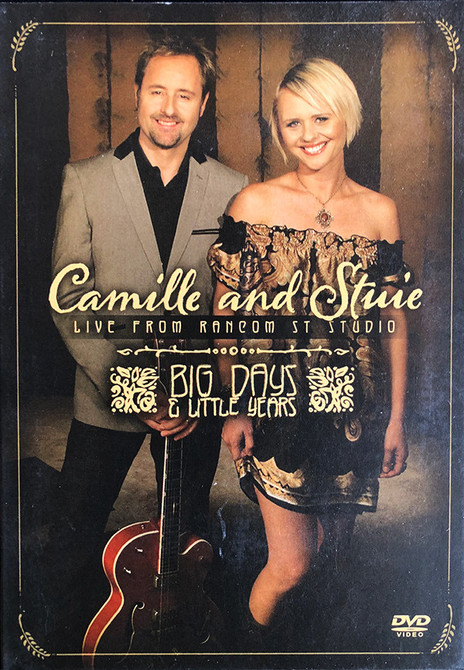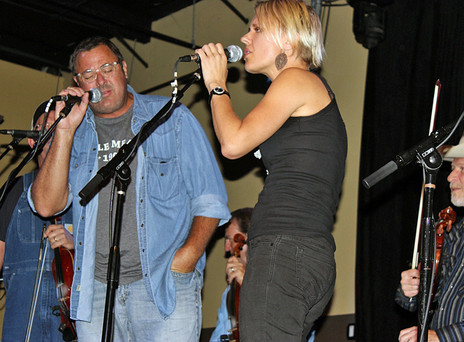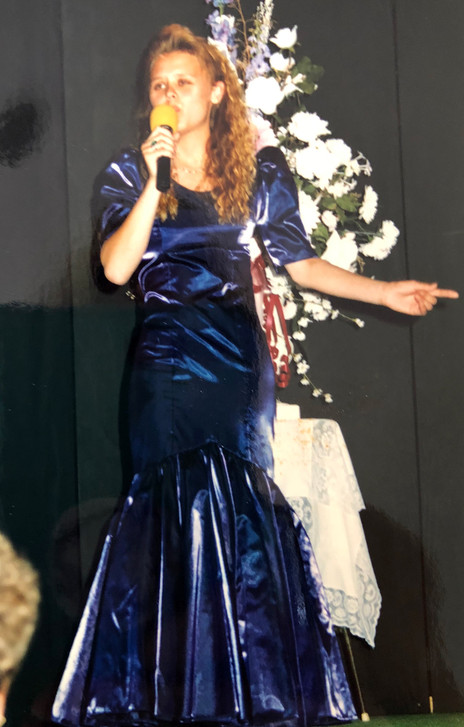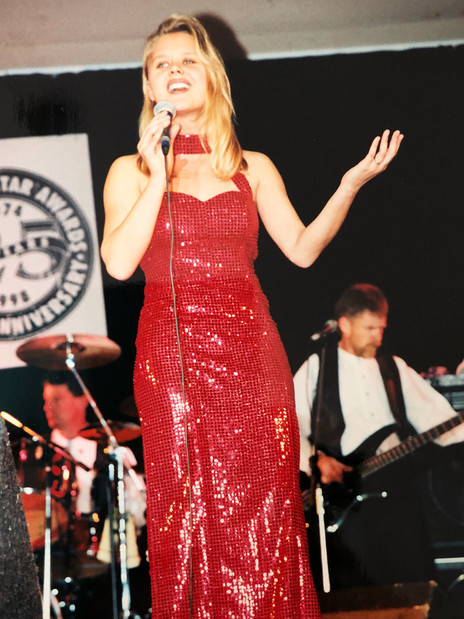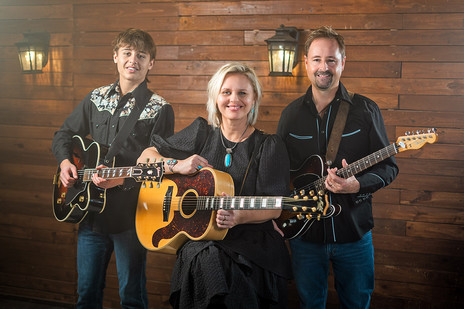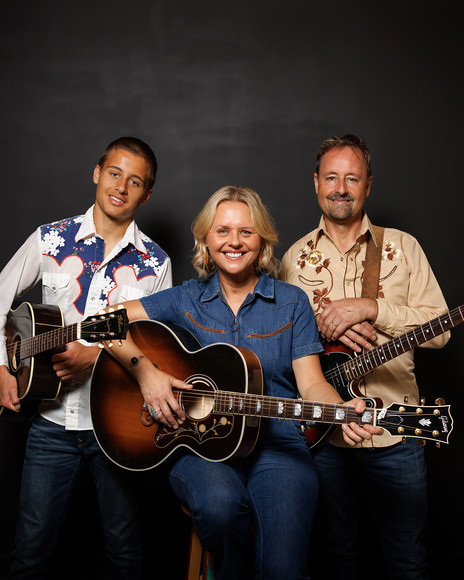The promise of a job in Sydney fell over and she spent the next couple of years learning the business on the road with crossover star Kasey Chambers. That led to touring and recording with Gina Jeffreys, Beccy Cole and Troy Cassar-Daley, where she first met Stuie French.
Camille and Stuie married in 2006 and have released five albums as a duo as well as raising three children. All the while she has kept her Māori culture to the fore with songs such as ‘Blue Smoke’, ‘Te Rina’, Prince Tui Teka’s ‘Mum’ and Eddie Low’s ‘Song Of Home’ amongst her recorded output; her own ‘Maori Woman’ even references her home town of Gisborne.
Camille was born there on 12 April 1976. Her mother Pele was part of the Waihirere Maori Club kapa haka group and the Gisborne Operatic Society. Camille would be dragged along to rehearsals where she would pick up the lyrics before her mother had.
She was an active child, not afraid to try her hand at most sports. There were stints in ballet, gymnastics and tap-dancing before she found success in trampolining, eventually competing for New Zealand at the Pan Pacific Championships. It was her trampolining coach who told Camille she would have to choose between the sport and music.
Her father Richard had taken her to the Gisborne Country Music Club when she was eight and she was soon a regular on the country music club awards circuit. With a voice beyond her years, she was snapping up junior titles up and down the country most weekends.
To allay the cost of petrol and accommodation, Camille’s mum would run raffles at her hairdressing salon. But Pele and Richard made sure that any prize money went directly into Camille’s bank account.
Her specialty were big ballads she had found on mix tapes compiled by her mum, featuring Patsy Cline, Dolly Parton, Anne Murray, Tanya Tucker, New Zealand’s Suzanne Prentice and the like. Sometimes she never knew who the singer was because her mum would only note the song title. When it came time to pick songs to perform in competitions there was often the inevitable debate with Dad.
Her prize as overall winner of the Golden Clef Awards in Rotorua in 1998 was a trip to the NZ Gold Guitar Awards in Gore.
“My mum and dad were my biggest critics,” Camille said, “and Dad was never shy to let me know what he thought of songs. He liked the more upbeat ones and that wasn’t my style. I was like the ballad queen, so he would constantly go, ‘I didn’t really think much of that one.’”
She won the New Zealand Country Music Association’s Junior Entertainer of the Year three years running and the Intermediate Entertainer twice before picking up titles as a senior. Her prize as overall winner of the Golden Clef Awards in Rotorua in 1998 was a trip to the NZ Gold Guitar Awards in Gore. Part of her prize for winning that was a flight to the Australian country music capital Tamworth.
The festival was a real eye-opener. “It was that trip to Tamworth that made me decide that this was where I wanted to come and start my music career,” Camille said. “I was blown away to see so many other people, especially around my age, that shared that same love of country music. It was pretty inspiring to meet and see so many other young singers and songwriters.”
Camille took the opportunity to enter the Star Maker talent quest that had launched the careers of previous winners Lee Kernaghan, James Blundell, Keith Urban and Gina Jeffreys. Although she didn’t win in 1999, one of the judges offered her employment at his distribution company in Sydney and six weeks later she had packed up and left New Zealand.
However, the company went into liquidation less than two months after her arrival and Camille was jobless and with few contacts in a new country. But there was no thought of returning home. She reached out to the Chambers family just as daughter Kasey Chambers’ debut solo album The Captain was released in Australia.
They had met at the Norfolk Island Country Music Festival in the mid-1990s when the Chambers family were The Dead Ringer Band. Nash Chambers and Camille had briefly gone out at the time and the family were now more than happy to take Camille under their wing.
“I ended up on the road with them, selling merchandise with Kasey’s mum, learning the ropes and doing support and BVs for Kasey,” Camille said. “Looking back it was a pretty good way to start my career over here.”
Produced by Nash with Bill Chambers on guitar, The Captain’s title track was a sparsely arranged affair with a close, emotive vocal harmony by Texan singer-songwriter Julie Miller. On the road that centrepiece part fell to Camille Te Nahu.
In late 2000 she toured the United States with Kasey, and the band appeared on long-running TV show Austin City Limits alongside Steve Earle. When producers of The Sopranos used ‘The Captain’ over the end credits of the show in 2001, Kasey Chambers became big news in the States. Camille was the harmony vocalist on Chambers’ 2002 Australian No.1 ‘Not Pretty Enough’.
“They were her really early days and I learnt a lot from the family just about how it all operates,” Camille said. “They were very self-sufficient. You know, we’d all be packing down the PA at the end of the night and driving for bloody hours and hours and setting the PA up the next day. There were some massive drives back then, but it was good fun.”
Camille’s time with Chambers led to work with headliners such as Gina Jeffreys and Beccy Cole. She spent about a year on the road with Jeffreys, singing backing vocals and selling merchandise. “I was just going with the flow with no real goal unless it was playing music and singing. Singing harmonies excites me just as much as singing on my own.”
It wasn’t until she met and married guitarist Stuie French that she found her place at the front of the stage. They met when traditional country singer Troy Cassar-Daley hired Camille as a backing singer – it was Camille’s first gig with Cassar-Daley and French’s last after an eight-year run. They were soon inseparable and encouraging each other to step into the limelight.
“It was a bit of a no-brainer: we should do this together”
“I used to say to him, ‘Man, you’re too good to be in the background,’ and he would say the same to me. So, suddenly it was a bit of a no-brainer – maybe we should actually go out on our own and do this together. And I felt confident doing it with someone else as well, as did he.”
In 2002, Camille recorded a self-titled album of her favourite songs, produced by French and Nash Chambers. It included Anne Murray’s ‘Snowbird’, Hank Williams’ ‘I’m So Lonesome I Could Cry’, the Leon Russell-penned standard ‘This Masquerade,’ and the te reo ballad ‘Te Rina’, a song that evolved when songwriter Tommy Taurima put new lyrics to the closing theme of TV show Stingray as a lullaby for his granddaughter.
Her work as a session backing vocalist continued on albums by Jeffreys, Cassar-Daley, Sara Storer, Beccy Cole and Kim Cheshire and in 2005 came the first album by Camille and Stuie, Not Without You. Relying mostly on covers, including Ruru Karaitiana’s evergreen ‘Blue Smoke’, the album featured Camille and Kevin Bennett’s ‘Maori Woman’.
“We did start to dabble a little bit in writing then,” Camille said. “But we still weren’t really confident to do our own thing. I mean, we loved doing classic country covers, so there was always going to be that mix.”
That theme continued after their April 2006 wedding on the albums Recovered (2006) and The Kindy Sessions (2008), but by then parents of three, “things changed” on their 2012 collection Big Days & Little Years and its tandem DVD Live From Rancom St Studio.
The collection included a set of highly personal songs about where they were in life. Lyrics about love and loss and marriage and family with titles such as ‘Things Change’, ‘Choices’, ‘Little Years’ and ‘Beverley Joy’ – a tribute to French’s mother who had passed away before Camille and Stuie had met. The song won Australian Independent Country Music Single of the Year at the Southern Stars independent awards.
Camille also became part of French’s sideline western swing outfit The Feral Swing Katz in which she is reminded of her kapa haka days back in Gisborne. “The feel of western swing just seems very similar to kapa haka; you’re lifting your foot, you’re dancing. To me they connect.”
A July 2014 appearance at the Chet Atkins Convention brought an unexpected highlight when, on a night off, they went to see country superstar Vince Gill and supergroup The Time Jumpers at the 3rd & Lindsley Bar & Grill in Nashville and were invited to sit in.
“That night was pretty surreal. Stuie and I were just so excited to be watching The Time Jumpers. We’d had a couple of wines and we were eating chicken wings, so I just remember our fingers being really sticky. And our friend Andy Reiss, who was in the band, came down during the break and said, ‘So what are you guys gonna come and sing?’ Stuie and I looked at each other and, you know, ‘We don’t have to sing, we’re just here to hang out.’”
They were cajoled onstage, French taking Gill’s guitar for ‘Panhandle Rag’ and then Gill joining Camille on Jeanne Pruett’s 1973 country No.1 ‘Satin Sheets’. “We had no intention of doing the second song, but the crowd were going a little bit crazy and so the band wanted another song. Stuie said, ‘If you don’t ask Vince Gill to sing with you, you are crazy.’
“So, I put him on the spot and he just came on over and was totally into it. It was pretty hysterical because I had a little bit of a moment in the middle of the song where I just went in for the hug and it turned into a dance. He was so lovely and so complimentary. At the end of the night he came up to us and said, ‘Well, are you guys famous in Australia?’ I said, ‘No, we’re not famous, we just do our thing over there.’ And he said, ‘Well, you should be.’”
Camille and Stuie try to get back to Nashville for inspiration every two years, and hope to spend more time there in the future. Touring in Australia is a highly planned undertaking since Camille’s parents passed away and they rely on a network of friends to mind the children. Mostly they try to take the family along, especially now that middle child Sonny has become a big part of the show. When he was seven in 2014, Sonny’s album Seven was released. Camille and Stuie’s Tahi followed two years later.
With their own home studio, there’s always something going on and a sixth album is in the works. “We are just so grateful to be able to have a job that we love,” Camille added. “It’s pretty stress-free most of the time. It’s a great way to live and travel and have a job that we love. So, if we can continue doing this, life’s pretty good.”
--
In June 2019, the French family moved to Nashville, Tennessee, to test the waters for a year, settling in Hendersonville, 29km north-east of downtown. They began reaching out to contacts, but responses were few and far between. Stuie picked up a bit of guitar work but not enough to provide for a family of five.
“We said to the kids, ‘Let’s go on an adventure for a year and see what happens,’” Camille said. “Then the world shut down and we got creative; it was like, we either go back home or we can do this.”
“The world shut down with covid and we got creative” – Camille te Nahu
With COVID-19 forcing everybody in the developed world to stay at home, The French Family Band began livestreaming weekly concerts from their home to Facebook – Camille, Stuie and Sonny being joined by oldest son Chet on bass, and even daughter Manaia, the youngest, making her singing debut. Proceeds from the virtual tip jar were the family’s main income for the next two years.
“It was really just to keep the kids busy and to keep in touch with family overseas,” Camille said. “The kids weren’t going to school, and we were all stuck here. So, we just put on those concerts and didn’t imagine they would go as well as they did. Socials exploded and it got to people that otherwise probably wouldn’t have heard us so soon. We were working really hard with those things. We were rehearsing every single day. We were trying to put on a new show every week, so it took up hours every day.”
Every Saturday night (Sunday afternoon NZ time) for 20 weeks or so, the family broadcast live from their lounge; later, they picked their favourite songs and posted them individually, some of them amassing up to 5 million views. Then the concerts were cut to fortnightly and, as the US got back to normal, the band were joined by Nashville musicians who were fans of the livestreams.
“That was another way for us to connect with other players,” Camille said. “They really loved the kaupapa; what we were about, what we were doing. So, we just started making all these connections that way. Chet went back to playing sport – his passion is soccer – and then we started getting in local players, in particular Dennis Crouch. He was kind of our main bass guy.”
As the pandemic slowed, people started calling and the band picked up a monthly residency at notable bluegrass nightclub the Station Inn. An agent for massive US department store chain JC Penney saw their broadcasts and flew them out to California to appear in the national JC Penney Christmas television campaign.
Connie Smith and Marty Stuart lobbied for them to appear on the grand ole opry
Two who looked forward to the livestreams every weekend were American country music royalty Connie Smith and Marty Stuart, who later took the French family out for Mexican food and lobbied for them to appear on the legendary Grand Ole Opry.
Others such as bandleader/session musician Jeff Taylor and bass player/producer Ben Isaacs implored Opry vice-president and executive producer Dan Rogers to check out the family from down under. Rogers did just that and The French Family Band made their Grand Ole Opry debut on Wednesday March 29, 2023. They have since appeared three more times.
Besides the Station Inn and the occasional festival or theatre show, Stuie French plays around 100 shows a year on the road with former Statler Brothers tenor Jimmy Fortune, and Camille, Stuie and Sonny are called for session work. There are plans to record a French Family Band album in the US summer of 2024.
“We do our monthly show at the Station Inn and just kinda take on gigs that work in, especially, like, with the kids,” Camille said. “We just want Sonny to enjoy his school life without any pressure to do music. We kind of revolve gigs around his availability. We’re happy.”
